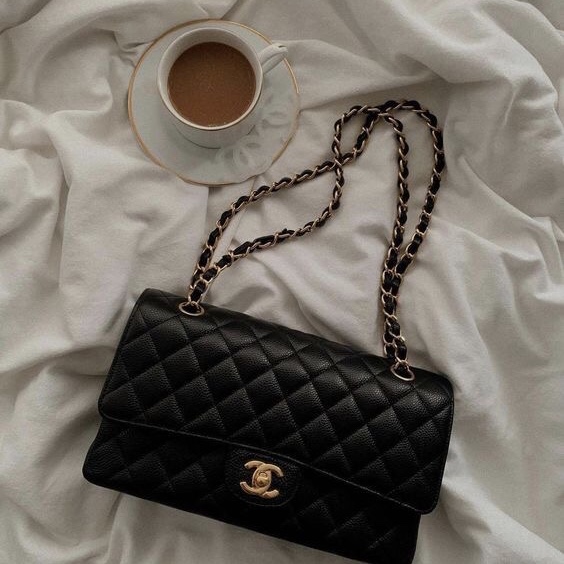
17
Feb
The Pros and Cons of Buying Used Designer Bags in the U.S.
There is an undeniable allure to owning a luxury handbag: the craftsmanship, the status, the sheer indulgence of it. That is exactly why used designer bags have become a sought-after alternative in the U.S.
Collectors and fashion enthusiasts are increasingly turning to used luxury handbags as a way to enjoy high-end fashion. If you are in the market for a Chanel Classic Flap, a Louis Vuitton Neverfull, or an exclusive Hermès Birkin, buying secondhand presents a cost-effective and stylish alternative.
However, not every purchase is a go-lucky experience. Let’s examine the advantages and drawbacks of buying used designer bags so you can make an informed decision.
The Advantages of Buying Used Designer Bags
Significant Cost Savings
The most compelling reason to opt for a used designer bag is the financial benefit. The luxury market sees substantial markups on new handbags, but in the resale space, prices are often reduced by 30 to 70 percent depending on factors such as condition, rarity, and demand.
For example, a brand-new Hermès Kelly 25 retails for around $10,000 to $12,000, but a lightly worn version on Fashionphile or The RealReal might cost closer to $8,500. The savings can be even greater for brands like Gucci or Prada, which depreciate faster than Hermès or Chanel.
As an Investment
Some designer handbags appreciate over time. The most coveted pieces, like the Hermès Birkin, the Chanel 2.55, or the Louis Vuitton Capucines, have outperformed traditional investment assets, including stocks and gold, in resale value growth.
According to a study by Baghunter, Hermès Birkin bags have increased in value by 14 percent annually, making them not only an accessory but a tangible investment.
If you purchase wisely, your used designer bag could be worth more in a few years than when you bought it.
Sustainability and Ethical Shopping
The luxury fashion industry is notorious for its environmental footprint. Opting for a secondhand designer bag promotes a circular economy, reducing waste and decreasing the demand for excessive production.
Research from the Ellen MacArthur Foundation suggests that extending the lifespan of fashion items by nine months reduces their environmental impact by 20 to 30 percent. Buying used means you are making a conscious, eco-friendly choice while still indulging in high-end fashion.
Access to Rare and Vintage Collections
The resale market is your best bet to own a limited-edition Dior Saddle Bag from the early 2000s or a Gucci Jackie in original monogram canvas. Many iconic designs are discontinued, making them unavailable in retail stores.
Boutiques like What Goes Around Comes Around and Rebag specialize in curating hard-to-find vintage bags, offering collectors and fashion lovers an opportunity to own truly one-of-a-kind pieces.
The Drawbacks of Buying Used Designer Bags
The Risk of Counterfeit Goods
The biggest concern in the secondhand luxury market is authenticity. The counterfeit industry has boomed in recent years, producing replicas that can fool even experienced buyers.
A report from the Organisation for Economic Co-operation and Development (OECD) states that counterfeit goods account for 3.3 percent of global trade, with luxury handbags being among the most counterfeited items.
To avoid falling victim to fakes, always buy from reputable resellers who offer:
-
Authentication services (AI-based and expert-reviewed)
-
Money-back authenticity guarantees
-
Clear return policies
Trusted platforms like LuxCross, Vestiaire Collective, and The RealReal, employ in-house authentication experts and use advanced technology to verify the legitimacy of their products.
Wear and Tear Considerations
Not all used designer bags come in impeccable condition. Some may have scratches, softened leather, or minor imperfections due to previous use. While this often leads to steeper discounts, it is essential to thoroughly review product images and descriptions before purchasing.
Most reputable resellers categorize handbags by condition:
-
Pristine: Looks brand new with no visible signs of wear
-
Excellent: Minimal signs of use, often barely noticeable
-
Very Good: Minor flaws such as light scuffing or small marks
-
Good: Noticeable wear but still highly functional
Limited Selection and Availability
Unlike shopping at a luxury boutique, where you can browse different colors and styles, the secondhand market is more unpredictable. You may not always find the exact handbag you want immediately.
However, setting alerts on resale platforms like Rebag, Fashionphile, and LuxCross can notify you when a sought-after bag becomes available.
Should You Buy a Used Designer Bag?
If you love luxury handbags, smart shopping, and ethical fashion, then buying used designer bags is a brilliant choice. You can save thousands, access rare collectibles, and make a more sustainable purchasing decision, all while owning a piece of luxury history.
LuxCross is Your Best Bet for Used Designer Bags
Navigating the retail market can be daunting, but LuxCross ensures a secure and smooth shopping experience.
-
Competitive prices on high-end brands
-
Expert authentication for 100 percent legitimacy
-
A carefully curated selection of exclusive designer pieces
-
Flexible payment options for effortless shopping.